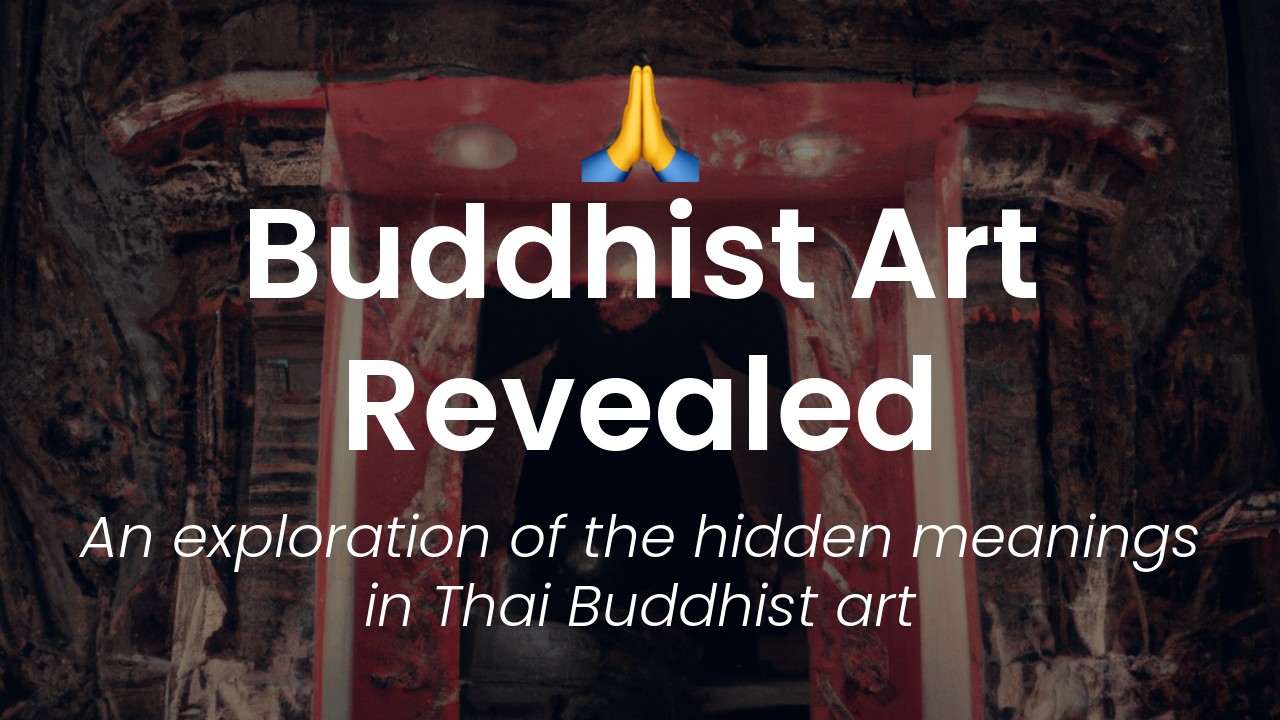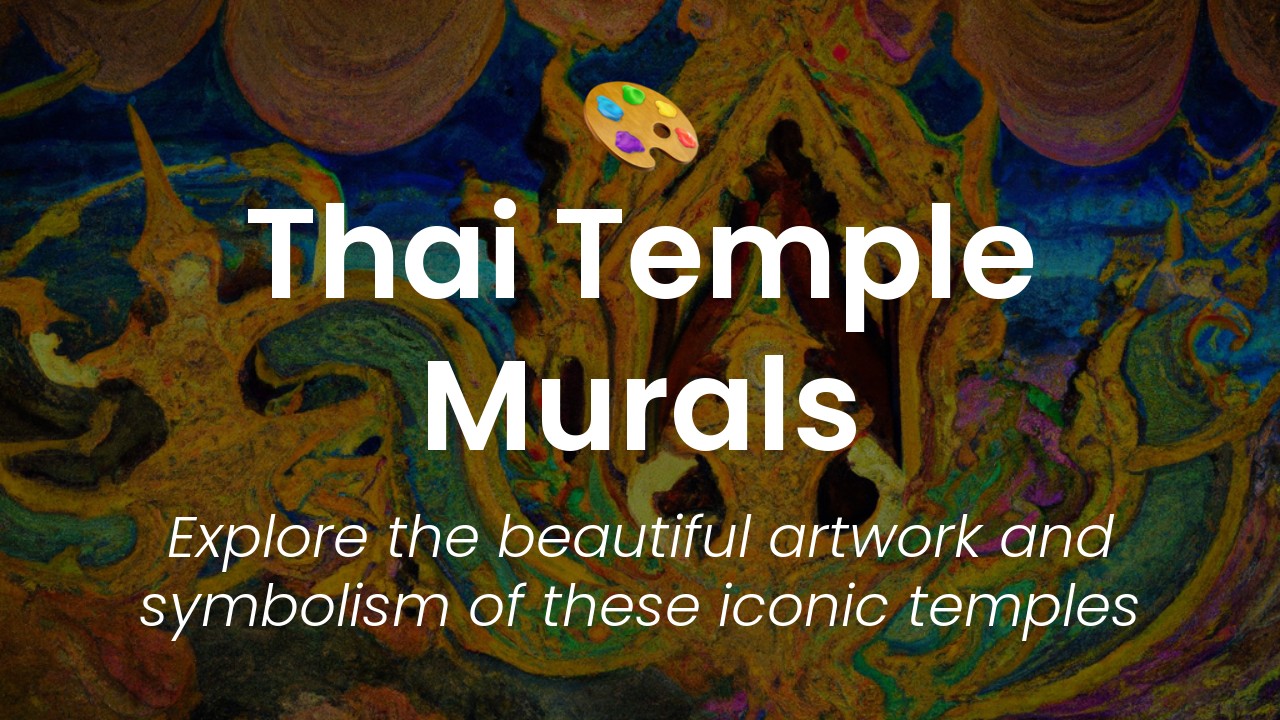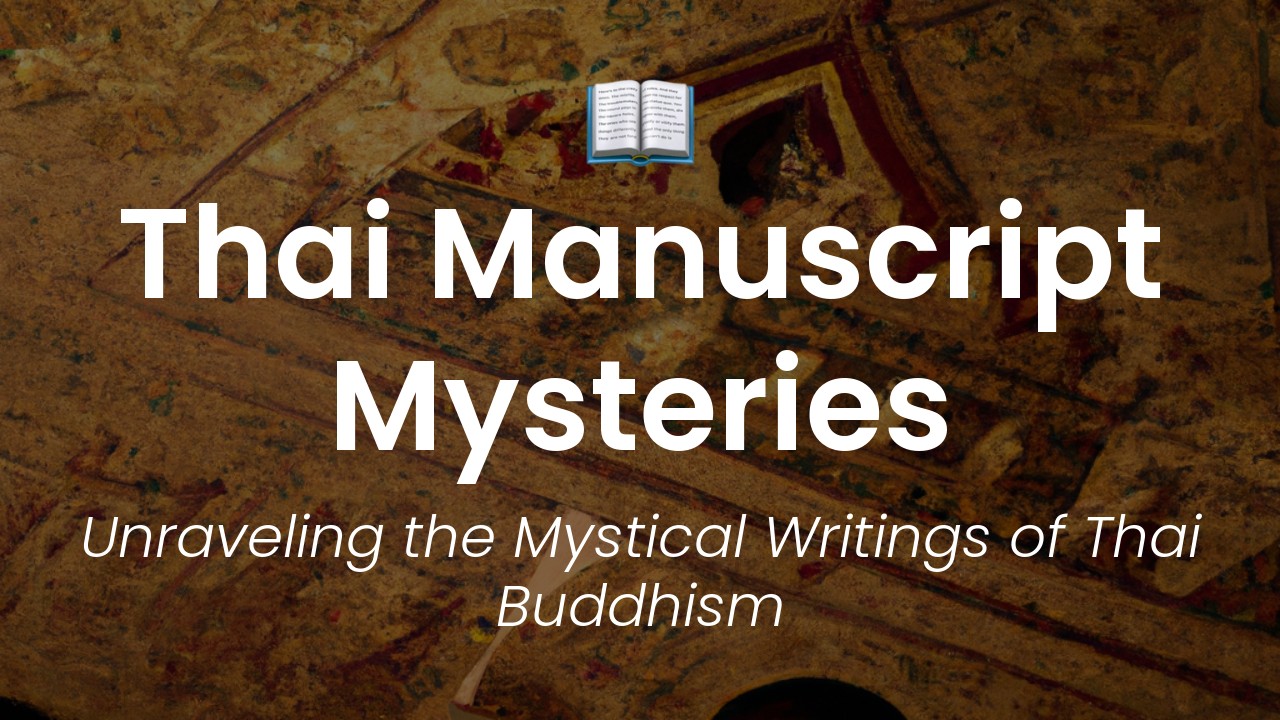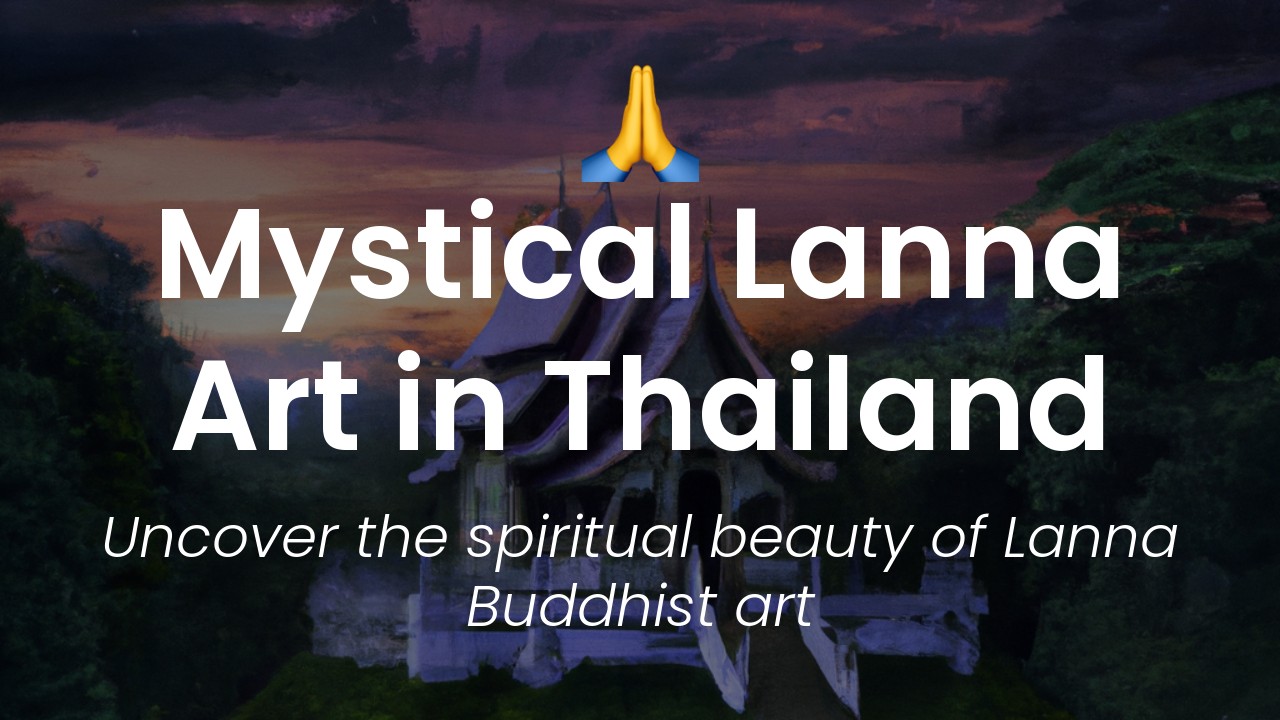As a lover of all things Thai, I've always been fascinated by the intricate details found in the murals of Thai temples. Each individual stroke tells a story of remarkable skill, creativity and dedication. But it's not just the beautiful artwork that captures my imagination; it's the deeper meanings and hidden messages that lie beneath the surface which truly intrigue me. What are the secrets behind each of these murals? What is the history, the cultural significance, and the symbolism that is embedded within their very fabric?
In this next article of my blog series, I'll be diving deep into the world of Thai temple murals to help you uncover the hidden meanings of these incredible works of art. From depictions of ancient myths and legends to scenes of everyday village life, each mural tells a unique and fascinating tale. By understanding the symbols, characters, and stories that are woven into these artworks, you can gain a deeper insight into the rich cultural heritage of Thailand.
But decoding these murals is no easy feat. It requires a keen eye for detail, as well as a deep understanding of Thai culture, history and religion. Through hours of research and first-hand exploration of some of Thailand's most famous temples, I've gained insights that will help you to unlock the secrets of these ancient works of art. So, whether you're a seasoned Thailand traveler or someone who is simply curious about Thai culture and history, I invite you to join me on this journey of exploration. Together, we'll uncover the mysteries that lie within the vibrant colors and flowing brushstrokes of Thai temple murals.
Iconography & Symbolism
Thai temple murals are not only stunning in their beauty but are also incredibly rich in meaning and historical significance. The murals are often found on the walls of temple buildings and Buddhist stupas and depict various scenes from the Buddha's life, depictions of deities, and mythical creatures. Each mural contains a wealth of symbolism and iconography that is meant to convey specific messages about the history, culture, and religious beliefs of the Thai people.
One of the most common symbols found in Thai temple murals is the lotus flower. The lotus is an important symbol in Buddhism as it represents the Buddha and his teachings. The flower is thought to symbolize the ability of humans to rise above suffering and reach enlightenment. Another significant symbol found in temple murals is the Naga, a serpent-like creature that represents water and is often associated with rain and fertility.
The Importance of Color
Color plays a crucial role in Thai temple murals, and each color is used to convey different meanings. Gold is often used to signify royalty and wealth, while red is associated with good fortune and prosperity. Blue is used to represent tranquility and peace, while green symbolizes growth and vitality. Black is also used in temple murals and is associated with death and danger.
White is another color that is commonly used in Thai temple murals. In Thai culture, white is associated with purity and innocence. In temple murals, white is used to represent the Buddha's teachings and wisdom. The use of white also serves to highlight certain elements in the murals and creates a sense of balance and harmony.
Depictions of Buddha & Deities
Thai temple murals often feature depictions of the Buddha and various deities from Thai mythology. The Buddha is depicted in various forms, such as the walking Buddha, laughing Buddha, and meditating Buddha. Each form of the Buddha represents different aspects of his teachings and is meant to convey specific messages to the viewer.
Deities such as Indra, Vishnu, and Shiva are also depicted in Thai temple murals. These deities are important figures in Hindu mythology and have been incorporated into Thai religious beliefs. In temple murals, they are often depicted with multiple arms and eyes, which represents their power and ability to see everything.
Scenes from the Buddha's Life
Many Thai temple murals depict scenes from the Buddha's life and teachings. These scenes often include the Buddha's birth, his enlightenment, and his various encounters with individuals seeking guidance. Each scene is meant to convey a specific message and teaching from the Buddha's life.
For example, one common scene depicted in Thai temple murals shows the Buddha meditating while Mara, the demon of illusion, tries to distract him. This scene represents the Buddha's ability to overcome obstacles and distractions on the path to enlightenment.
Interpretations of Mythical Creatures
Mythical creatures such as the Garuda, Hanuman, and Kinnara are often depicted in Thai temple murals. These creatures are significant figures in Thai mythology and have been incorporated into Buddhist beliefs.
The Garuda, for example, is a bird-like creature that represents strength and power. In Hindu mythology, the Garuda is the mount of the god Vishnu. In Thai Buddhism, the Garuda is often depicted fighting against evil spirits and protecting the Buddha's teachings.
Stories of Thai Culture & History
Thai temple murals are not only religious in nature but also serve as a record of Thai culture and history. Many murals depict scenes from Thai daily life, such as farming, fishing, and weaving. These scenes serve to show the importance of these activities in Thai culture and how they have been a part of daily life for centuries.
Other murals depict important historical events and figures, such as King Rama V and the Siamese Revolution of 1932. These murals serve as a reminder of the struggles and achievements of the Thai people and highlight the importance of preserving Thai cultural heritage.
In conclusion, Thai temple murals are an important part of Thai culture and history. These stunning works of art are not only aesthetically pleasing but also contain a wealth of symbolism and meaning. By interpreting the hidden meanings in these murals, we can gain a deeper understanding of Thai religious beliefs, culture, and history.





